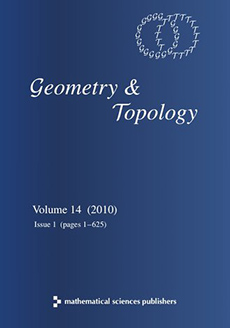Abstract
Minimum numbers decide, eg, whether a given map from a sphere into a spherical space form can be deformed to a map such that for all . In this paper we compare minimum numbers to (geometrically defined) Nielsen numbers (which are more computable). In the stable dimension range these numbers coincide. But already in the first nonstable range (when ) the Kervaire invariant appears as a decisive additional obstruction which detects interesting geometric coincidence phenomena. Similar results (involving, eg, Hopf invariants taken mod 4) are obtained in the next seven dimension ranges (when ). The selfcoincidence context yields also a precise geometric criterion for the open question whether the Kervaire invariant vanishes on the 126–stem or not.
Citation
Ulrich Koschorke. Duane Randall. "Kervaire invariants and selfcoincidences." Geom. Topol. 17 (2) 621 - 638, 2013. https://doi.org/10.2140/gt.2013.17.621
Information





